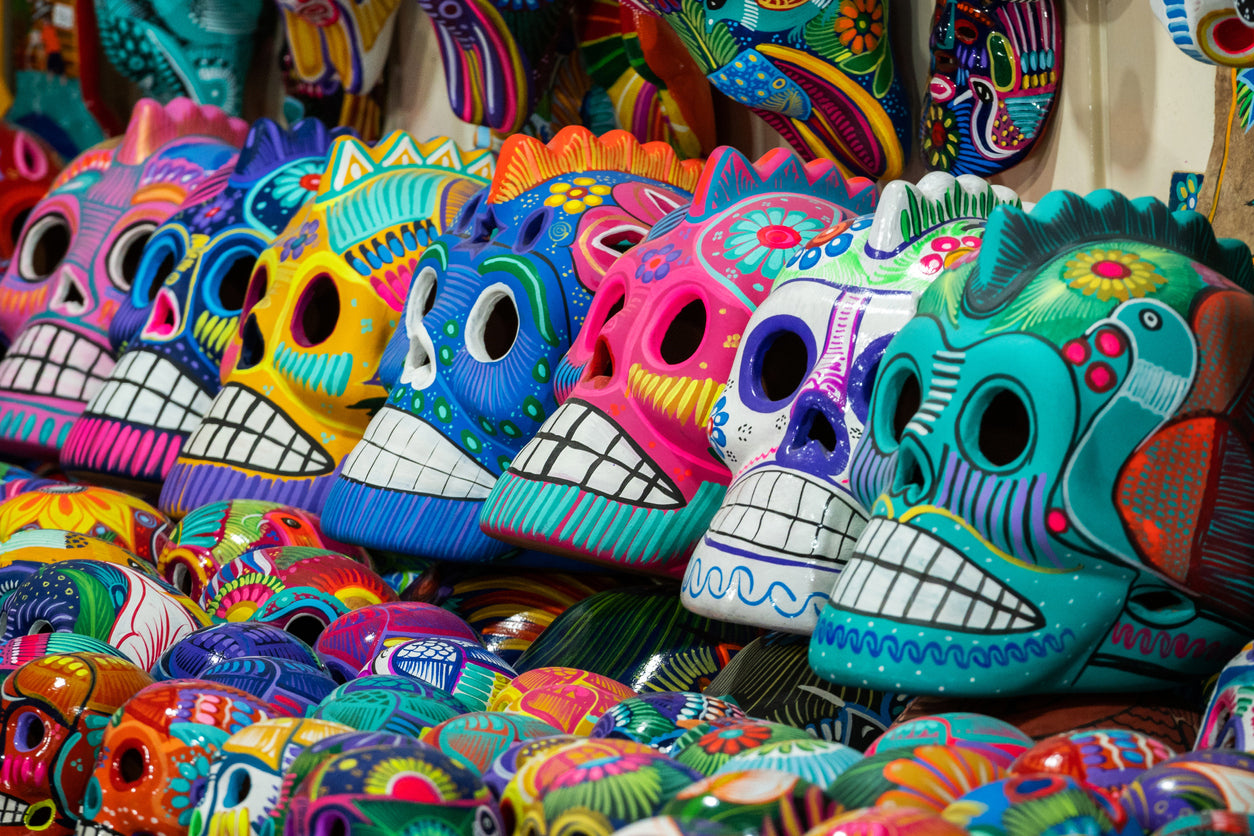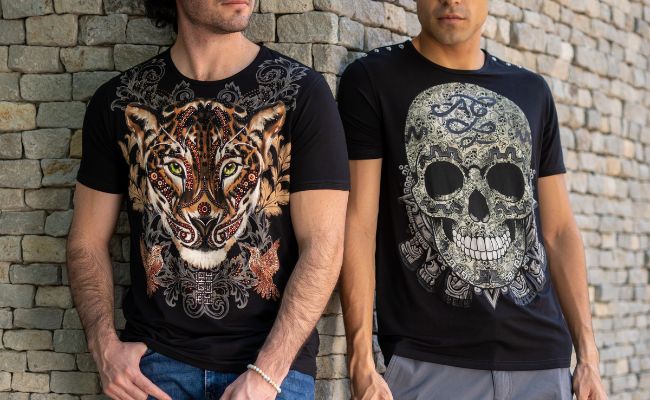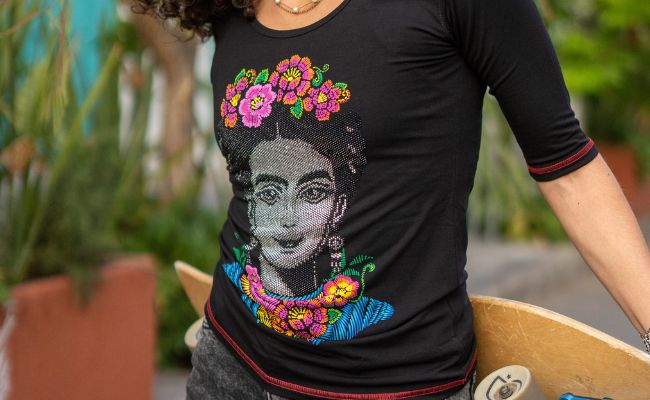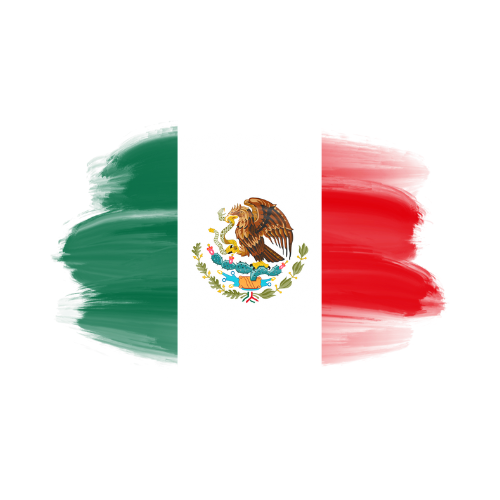Article: Designs inspired by Mexican culture... learn more about it

Designs inspired by Mexican culture... learn more about it
Being a 100% Mexican brand, we firmly believe in the high value that Mexico offers for the production of our garments. We want people to perceive Mexican culture at its maximum splendor from Ay Güey's perspective.We continually reinvent our garments, always leaving the traditional Mexican characteristic look.
Below, we will show different Mexican icons that are protagonists in our products and the cultural significance of each one.
Sugar skulls
Sugar skulls cannot be absent from altars and decorations at the festivities related to the Day of the Dead in Mexico.
Before the existence of sugar skulls, in pre-Columbian times, they were used in the Tzompantlis (altar of ancient cultures adorned with skulls of people sacrificed) to honor their gods. For these cultures, death was just the conclusion of a stage of life that extended to another level. The skulls of the deceased people were preserved and displayed in different rituals as a symbol of the end of the first stage.
With the arrival of the Spanish and evangelization, the cults and rites that went against the beliefs of the Catholic religion were prohibited, but in many cases, faced with the resistance of the indigenous people to eliminate them, they decided to just replace them.
In this way the sugar skulls arose, which is a constant reminder of death always present, that inevitable passage from the earthly to the mystical.
In November, throughout Mexico, they appear in different sizes, decorated with crowns, spirals and multicolored frets. Some have the name of the deceased, others are given with the names of living people, reminding them of their inevitable destiny.
In summarize, the sugar skulls are offerings for the altar that is prepared in the houses with the photo of the dead relatives, candles, flowers, and different dishes.
For Mexicans, it represents an ancient tradition that identifies us among ourselves, which is why at Ay Güey we wanted to give it its splendor.

Jaguar
One of the most important animals in the pre-Hispanic worldview was the jaguar.
The jaguar, symbol of power and strength, of life and fertility, is the largest feline in America. Its privileged view allows to see day and night. Although they can weigh the same as two people together, they are extremely agile. These qualities make him an admirable animal.
From very ancient times the Olmecs represented men with feline features. Centuries later, in Teotihuacan, this animal was a very common motif, but it was represented with attributes of other animals, such as birds and snakes. The jaguar symbolized the night and was the nagual par excellence of the most important men (such as the ruler or the priests), of men linked to the supernatural (such as sorcerers) and of the gods themselves (such as Tezcatlipoca).
The relationship with this god was very close, since in creation myths this numen was the first Sun, which when displaced by Quetzalcóatl, became a jaguar.
One more proof of the close link between the feline and the god is found in Tepeyólotl (Heart of the mountain), a deity that is an invocation of Tezcatlipoca and is represented as a jaguar.
Finally, for the Mayans, as for other Mesoamerican cultures, the jaguar —balam— is considered a sacred animal due to its great qualities. According to some legends, this feline gave its strength to different Mayan deities.
For Ay Güey, the Jaguar is a clear representative icon of Mexican pre-Hispanic culture, which honors the strength that we seek to demonstrate as Mexicans.


Hummingbird
The hummingbird is undoubtedly one of the most special birds in the world. It is the only pollinator, the only one with a long and thin beak and can fly backward. It is also the one that applies the fastest flapping (55 times per second).
Perhaps due to its many singularities, including its beauty, this American bird occupies an essential role in pre-Hispanic cosmogony. In addition, ancient Mesoamerican cultures, from the Mayans to the Aztecs, highly valued brightly colored bird feathers, especially those of the hummingbird.
On one hand, in the case of the Aztecs, it was the hummingbird that led them to Aztlan. This beautiful bird, named huitzilin in Nahuatl, is considered the nahual of war. On the other hand, the Mayans also considered the hummingbird in a privileged place, serving as a kind of messenger between the gods and humans.
In both cases, the hummingbird was admired for its vitality and beauty, it was so important that myths arose about how the hummingbird influenced their cultures.
For Ay Güey, hummingbirds continue to embody the beauty and uniqueness of current Mexican culture. It is a representative symbol of our ancestors, and today, we still want to continue reflecting that brightness.

Wrestling masks
AAA wrestling is part of the Mexican identity, like mole, mariachis, and tequila; the masks of the fighters identify us as much as the shield of the Mexican flag.
Thanks to this cultural load, it is now the Intangible Cultural Heritage of Mexico City.
The first wrestling matches in Mexico occurred in the early 19th century. These early exhibits included Greco-Roman wrestling performances, which were carried out by French troops during the Intervention (1860-1867).
Mexican wrestling is derived from French catch-as-catch-can - which was popular during the 1930s - in combination with American wrestling and Greco-Roman wrestling. And, on September 21 of 1933, the most important wrestling company in the world, Empresa Mexicana de Lucha Libre, was founded.
There the history of Mexican wrestling began to be written.
Mexican wrestling flourished and became unique when its iconography began to provide its followers with a great cathartic theatricality through its symbolic dimensions.
The greatest boom in Mexican wrestling was between the 1940s and 1970s, a period that coincides with the flourishing of other cultural industries in the country, such as radio, film, and television. The glory of the cinema whose protagonists were fighters, the great Saint as the most iconic, also managed to project very particular Mexican features, such as spirituality, eroticism, comedy, and tragedy.
Mexican wrestling, a mixture of circus and theater, has many admirers and international projection. In Mexico, fans of this sport are just below soccer.
For Ay Güey is clear proof of the importance that this sport represents for the Mexican community and what better way to express its importance than in our garments.

If you want to know more visit: El universal, México desconocido, Masdemx.









Leave a comment
This site is protected by hCaptcha and the hCaptcha Privacy Policy and Terms of Service apply.